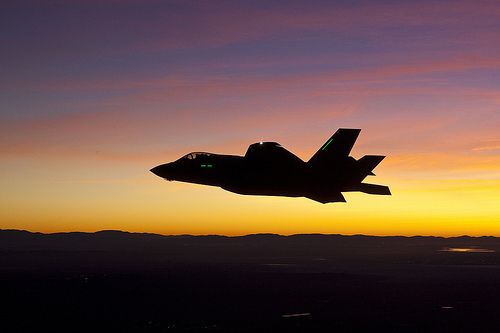The Air Force has filed a draft environmental impact statement for the proposed operational basing of the F-35 Lightning II within the continental United States.
The current active Air Force and Air National Guard alternatives under consideration are: Burlington Air Guard Station, Vt.; Hill Air Force Base, Utah; Jacksonville Air Guard Station, Fla.; Mountain Home AFB, Idaho; and Shaw AFB/McEntire Joint National Guard Base, S.C.
“Candidate installations were identified through a deliberate process that began with a clear definition of training requirements and progressed through a screening process leading to the alternatives currently being considered,” said Kathleen Ferguson, the deputy assistant secretary of the Air Force for Installations. “The Air Force is analyzing the impacts of basing three squadrons of 24 aircraft each at the active duty location and one squadron of 24 aircraft at the Air National Guard location.”
Hill AFB is the Air Force’s preferred alternative for the active duty operational location and Burlington Airport is the Air Force’s preferred alternative for the Air National Guard operational location. A final decision regarding selection of an operational bed down location will be made upon completion of the environmental impact statement.
The F-35A is a fifth-generation fighter aircraft designed with stealth, maneuverability and integrated avionics to assume multi-role missions. The Air Force views the aircraft integral to the future of strike aviation and to counter emerging anti-access/area denial threats.
“Our aging fourth-generation aircraft lack modern stealth technology and integrated avionics, and will become increasingly less useful against burgeoning adversary anti-access and area-denial strategies and capabilities such as air defense systems, radars, missiles, and aircraft,” Air Force Chief of Staff Gen. Norton Schwartz said. “As such, we remain committed to the fifth-generation F-35, which represents the future of tactical aviation for the Air Force.”
The draft EIS for the F-35A operational locations opens a 45-day public comment period. The Air Force will conduct 17 public hearings at locations surrounding the potentially impacted communities to receive oral and written comments on the draft EIS.
“The Air Force is committed to planning future activities while considering environmental and community impacts and minimizing them where practical,” she said. “A final decision will be reflected in a record of decision expected in the fall of 2012.”
The Federal Aviation Administration and the Department of the Navy are cooperating agencies in the EIS process.










